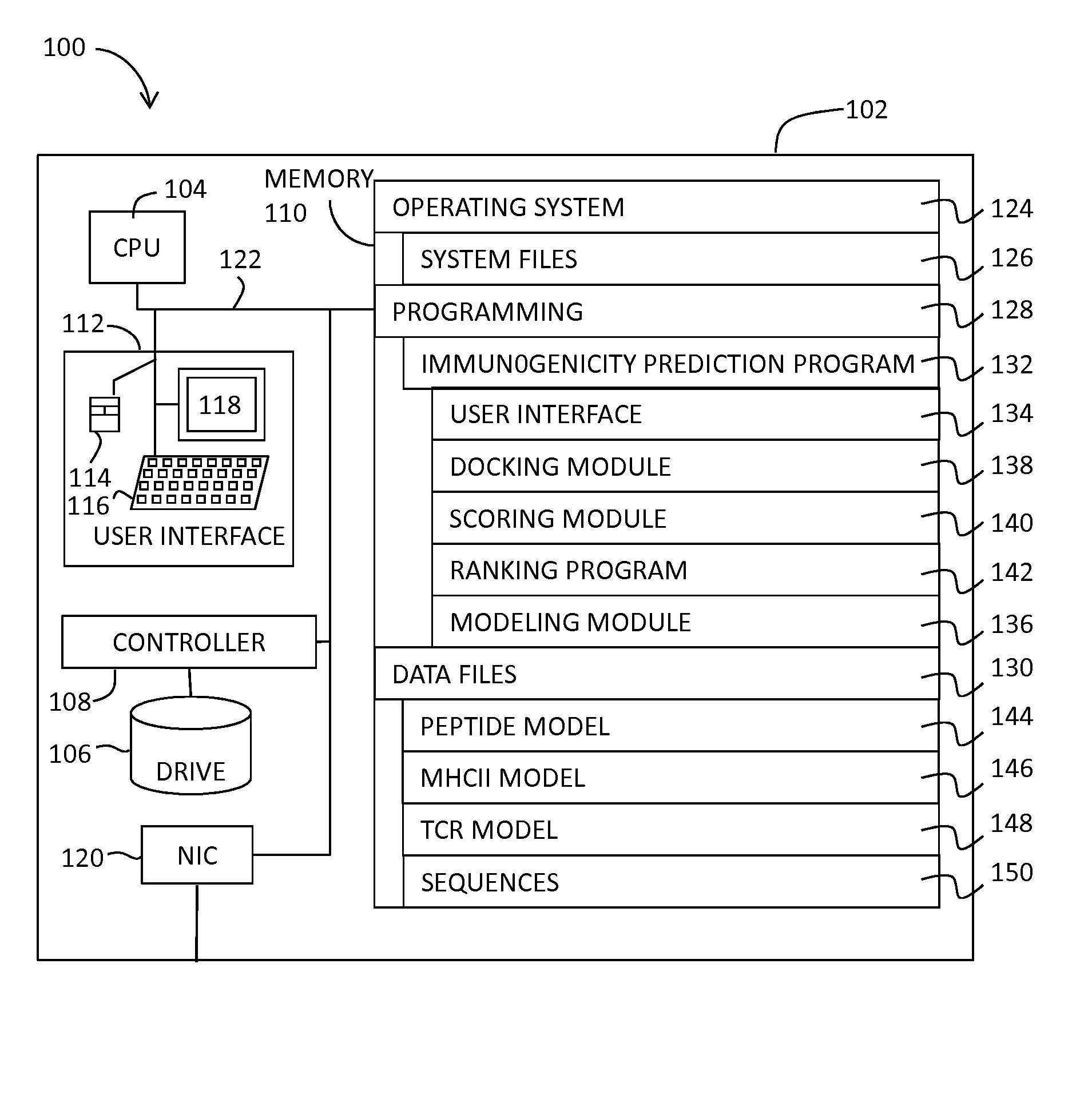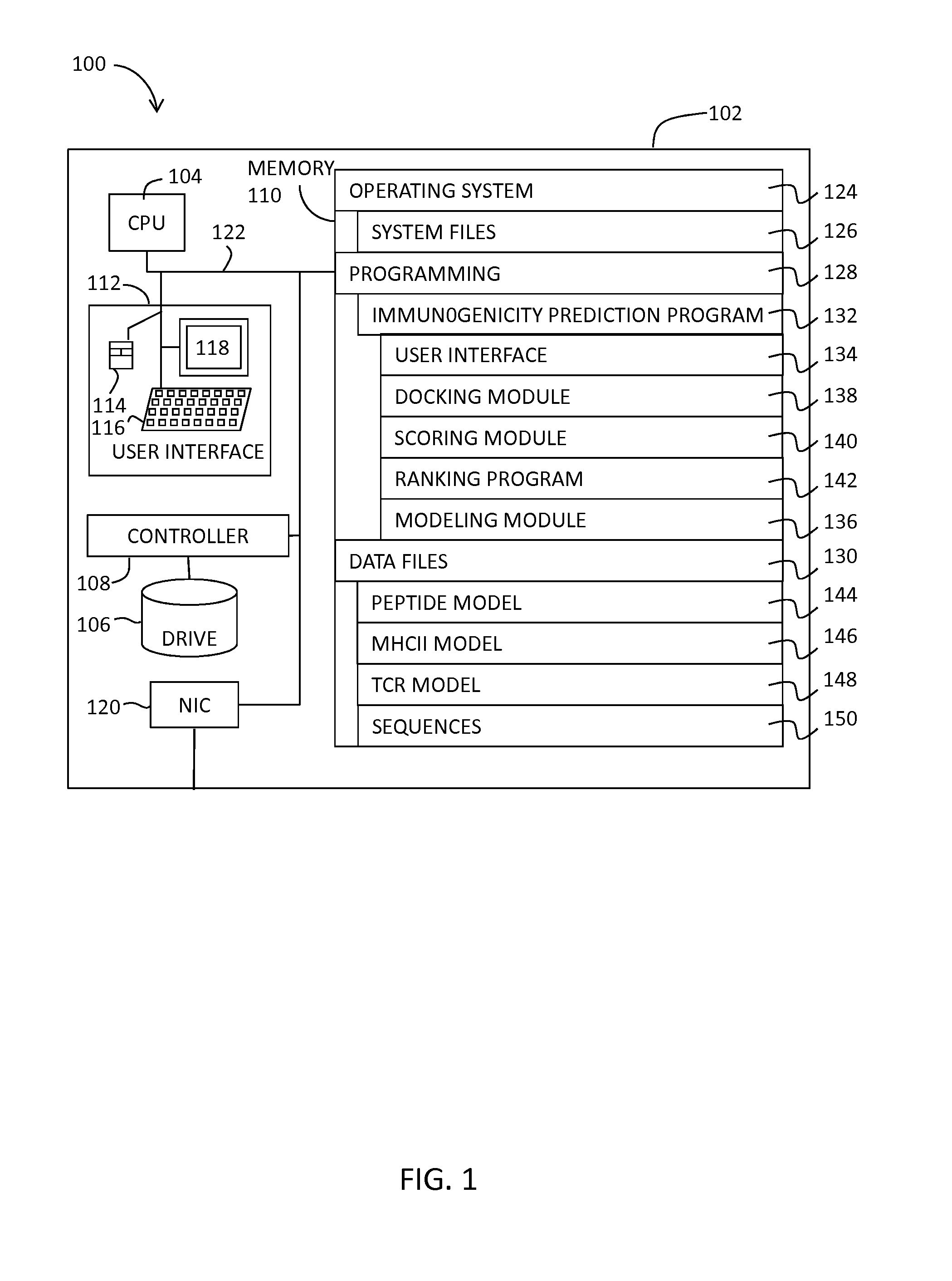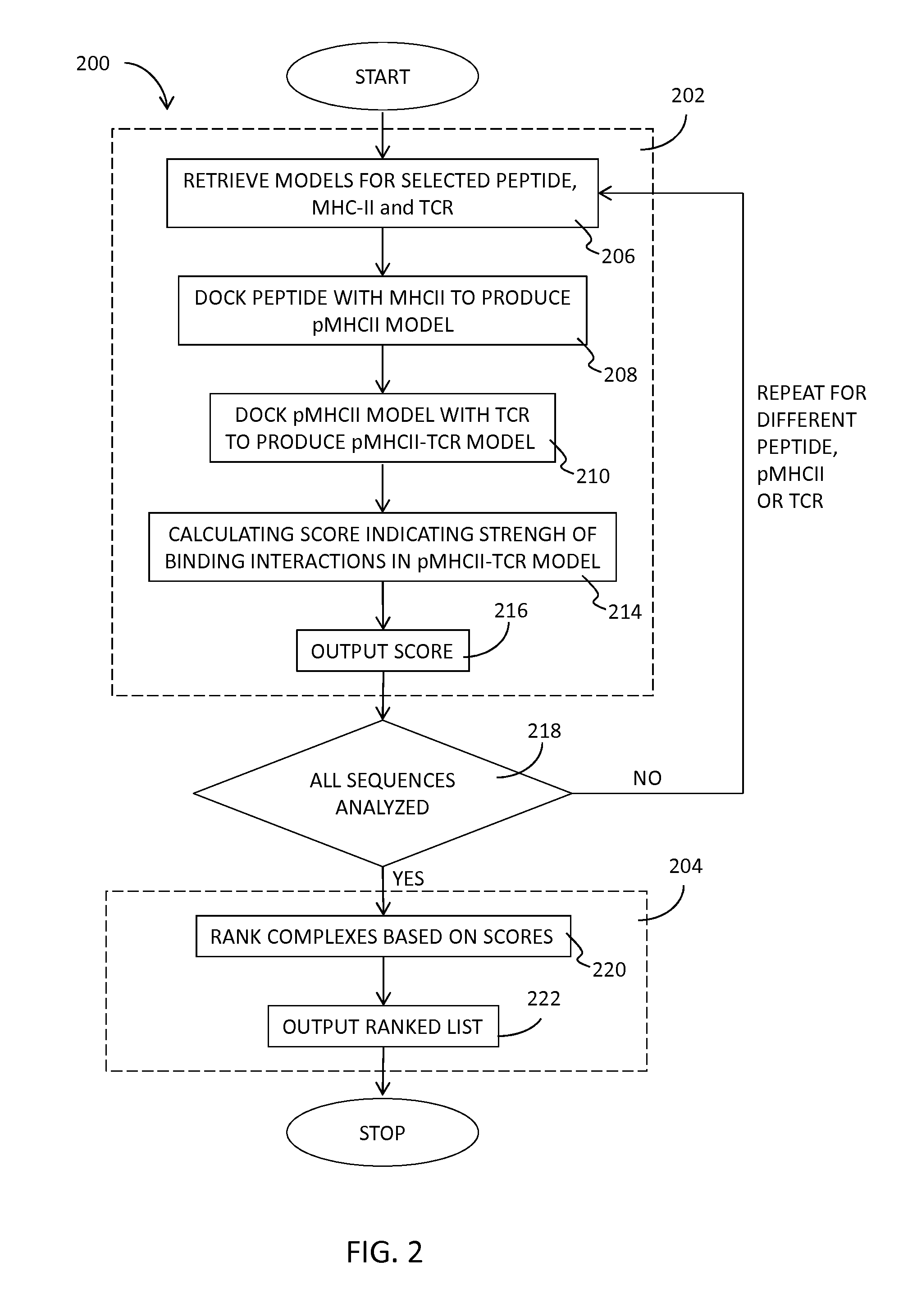System and Method for Predicting the Immunogenicity of a Peptide
a technology of immunogenicity and system, applied in the field of system and method for predicting the immunogenicity of peptides, can solve the problems of organ failure or death, reducing efficacy,
- Summary
- Abstract
- Description
- Claims
- Application Information
AI Technical Summary
Benefits of technology
Problems solved by technology
Method used
Image
Examples
example 1
[0070]Step 1: The amino acid sequence of the protein under study will be used to generate a series of overlapping 15 amino acid peptides using a Perl script (AA_process.pl). This method will be done by moving a window along the amino acid sequence of the protein under study to provide a series of peptides which will overlap with one another by 14 amino acid residues. The resulting output will be a text file with a list of overlapping 15-mer peptides comprising the entire length of the protein under study.
[0071]Step 2: Major histocompatibility complex class II (MHCII) proteins lacking x-ray crystallography structures will be modeled using MODELER (Discovery Studio, Accelrys) or an equivalent protein modeling software. This can be done through homology modeling of unknown structures using structures of resolved MHCII proteins. Structures that can be used for homology modeling can be found in the Protein Data Bank (PDB) website. Some examples of such structures are: 3QXA, 3L6F and 3PGD...
example 2
[0078]Given an MHCII sequence, a T cell receptor (TCR) sequence, and the sequence of a protein of interest, peptides derived from the protein of interest were ranked according to their predicted capacity to form a stable MHCII-peptide-TCR complex as follows.
[0079]The following two-step scoring protocol was developed to mimic the process of TCR-pMHC complex formation. First, the peptide sequence is modeled into the MHC cavity and the peptide-MHC interaction is refined and scored. Side-chain positions of both the peptide and the MHC are refined. This results in pMHC_score. Second, the TCR is added to the peptide-MHC complex from the previous step. The interface side-chains of both TCR and pMHC are refined, as well as TCR orientation with respect to pMHC. The score, TCR pMHC_score, is computed for the interaction between TCR and pMHC. Finally the final score is computed as the sum of the two scores:
Score=pMHC_score+TCR pMHC_score
[0080]In the current implementation, the FireDock scoring...
example 3
[0085]The ternary MHCII-peptide-TCR complex can be modeled using available crystal structures as templates for new complexes. The PDB currently contains nine human MHCII-peptide-TCR complexes (NCBI structure accession numbers 1j8h, 1fyt, 4e41, 2iam, 2ian, 1ymm, 3p16, 3o6f, and 1zgl) that can serve as templates. In addition, there is a similar number of structures of human MHCII-peptide-TCR complexes that can serve as templates.
[0086]The second part of this study combines the three-component complex modeling with the scoring function, followed by refinement of the algorithm. The scoring protocol and the modeling protocol were combined and tested using available structures for the complexes. A full length sequence for each of the peptides in the complexes was been identified, and all of the peptides in those full length sequence were modeled using the modeling algorithm described above. The scores were computed using the methods described above. The rank of the correct peptide was det...
PUM
| Property | Measurement | Unit |
|---|---|---|
| strength | aaaaa | aaaaa |
| size | aaaaa | aaaaa |
| three dimensional structure | aaaaa | aaaaa |
Abstract
Description
Claims
Application Information
 Login to View More
Login to View More - R&D
- Intellectual Property
- Life Sciences
- Materials
- Tech Scout
- Unparalleled Data Quality
- Higher Quality Content
- 60% Fewer Hallucinations
Browse by: Latest US Patents, China's latest patents, Technical Efficacy Thesaurus, Application Domain, Technology Topic, Popular Technical Reports.
© 2025 PatSnap. All rights reserved.Legal|Privacy policy|Modern Slavery Act Transparency Statement|Sitemap|About US| Contact US: help@patsnap.com



